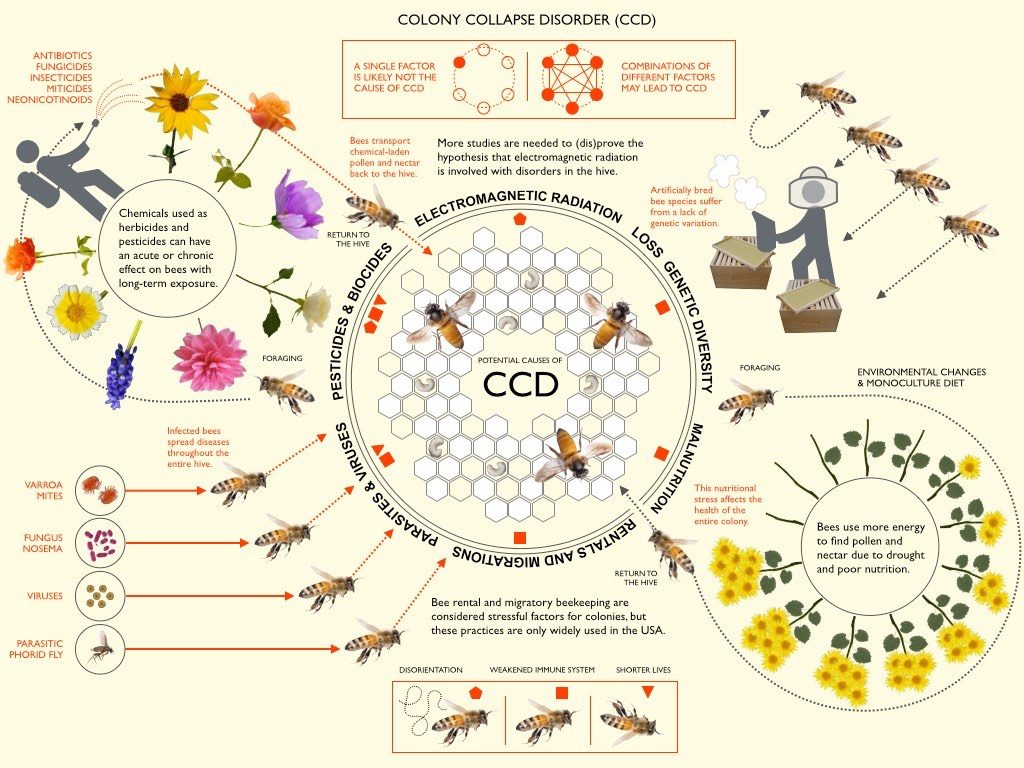Colony Collapse Disorder (CCD) is a phenomenon that has been observed in honey bee colonies since the late 1990s. It is characterized by a sudden and dramatic decline in the number of worker bees in a colony, with very few bees remaining to care for the queen and larvae. While there are many potential causes of CCD, scientists believe that a combination of stressors, including parasites, pathogens, pesticide exposure, and nutrition deficits, may contribute to this condition.
CCD represents a serious threat to global food security, as honey bees play a vital role in pollination. In addition to their agricultural importance, honey bees are also key components of many ecosystems. The loss of these important pollinators could have far-reaching consequences for both the environment and the economy.
While research on CCD is ongoing, there is still much that remains unknown about this phenomenon. However, scientists are working diligently to better understand CCD and develop strategies to protect honey bee populations from its devastating effects.


